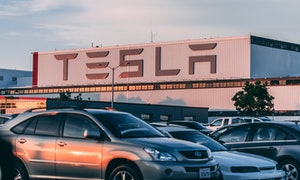The government of many countries is promoting the acceptance of Electric Vehicles. Policies like tax credits, incentives, subsidies, and long term policies. Compared to fuelled base vehicles, electric vehicles are noise-free, with no emission. Electric vehicles became popular in the late 19s. Before that cheap petrol and diesel vehicles led to a decline in the use of electric vehicles.
Modern Electric Vehicle
Electric automobile advances with the discovery of power MOSFET, single-chip microprocessors, and a Lithium-ion battery. Power MOSFET allows to operate high switching frequency and reduces power losses. The single-chip microprocessor allows controlling all driving aspects and efficient battery management. These are responsible for the development of Electric vehicles and prices reduce significantly in India. The efficiency of covering long distances also increased.
Key Components of Electric Vehicles
The battery in electric vehicles provides electrical power to the vehicle's electrical components.
The charging port allows the vehicle to charge from an external power supply to charge batteries.
DC/DC converter converts high voltage DC power from the traction batteries to low DC voltage. It is needed to run the vehicle’s accessories and charge the auxiliary battery.
Electric traction motor draws power from the batteries and drives the vehicle. Motor generators can also be used which provides drive and power regeneration.
Onboard Charger is used to monitor the battery voltage, current, state of charge, temperature, etc.
Power Electronic controller manages the flow of electrical energy. It also controls the speed and torque of the traction motor.
Thermal System (cooling)maintains the temperature of the engine, electric motor, and other components.
Types of Electric Vehicles in India (EV)
Hybrid Electric Vehicles (HEVs)
Plug-in hybrid Electric Vehicles (PHEVs)
Hybrid Electric Vehicles (HEVs)
Hybrid electric vehicles are powered by a combustion engine. This engine is made of one or more electric motors. The hybrid electric vehicle is expensive than fuelled vehicles. Hybrid electric vehicles are beneficial for the fuel economy and have lower emission factor. In a Hybrid electric vehicle system, regenerative brakes can be used to charge batteries. There are two types of hybrid EVs- mild and full hybrid. Again, based on their efficiency and fuel consumption they are divided into- series hybrid and shunt hybrid.
Plug-in Hybrid Electric Vehicles (PHEVs)
Plug-in hybrid electric vehicles (PHEVs) also use batteries to power motor. Fuel such as gasoline or diesel is used to power an internal engine. Costs and fuel use reduces while running on electricity. The plug-in hybrid electric vehicles may also produce lower levels of emission. Plug-in hybrid electric vehicles have large and heavy battery packs. Plug-in hybrid electric vehicles batteries are charged by an electric power source, internal combustion engine or regenerative braking system. During braking, the electric motor acts as a generator result in charging the batteries.
The efficiency of Electric Vehicles
Electric vehicle motors are more efficient than combustion engine vehicles. Converting the stored energy into driving a vehicle. But they are not efficient at speeds. Regenerative braking is used in electric vehicles that can recover one-fifth of the energy. Efficiency increases when renewable electricity is used. Frequently overcharging lithium-ion batteries may degrade over a long period. This may take several years before being noticeable. Only 0.01 % of batteries had to be replaced due to some failures. There is no issue with vehicles that already covered 2,00,000Kms.
Vehicle Safety
The safety issues of Electric Vehicles are mentioned in international standard ISO 6469 which is divided into three parts:
On-board electrical energy storage
Functional safety and protection against failures
Protection of persons against electrical hazards
The weight of the batteries makes an Electric Vehicle heavier. Depending on the battery location of the center of gravity is lowered, provides driving stability, lowering the risk of an accident through control loss.
Environmental Aspects
Electric Vehicles are more beneficial than combustion engine automobiles. Air pollution is reduced and no direct emission of pollutants like CO2, other volatile particles, etc. The cost of installing charging infrastructure will be repaid by health cost savings within 3 years of installing. Another aspect is the availability of lithium. There is sufficient reserve of lithium to power 4 billion electric cars. As lithium and other heavy metals can be extracted in much easily processes.
Cost of Electric Vehicles available in India
Hybrid Electric Vehicles in India
- Tata Nexon EV| Cost: Rs13.99 lakhs onwards
- Hyundai Kona Electric| Cost: Rs 25.28 lakhs onward
- MG ZS EV| Cost: Rs 20.88 lakhs onward
- Tata Tigor EV| Cost: Rs 11.08 lakhs onward
- Mahindra e2o Plus| Cost: Rs 7.82 lakhs onward
- Mahindra e20 NXT| Cost: Rs 6-8 lakhs (Estimated Price)
- Audi e-Tron| Cost: Rs 1-1.50 Crore (Estimated Price)
- Tata Tiago EV| Cost: Rs 5-7 lakhs (Estimated Price)
Plug-in Hybrid Vehicles
- Toyota Vellfire| Cost: Rs 92.97 lakhs onward
- Toyota Camry| Cost: Rs 43.63 lakhs onward
- BMW 7 Series| Cost: Rs 1.50 Crore onward
- Lexus ES| Cost: Rs 51.91 lakhs onward
- Porshe Panamera| Cost: Rs 1.65 Crore onward
- Lexus NX| Cost: Rs 54.90 lakhs onward
- Lexus LS 500h | Cost: 1.96 Crore onward
You may like: Electric vehicle charging station in India
comment below if you have any question
Post by Samrat Bose









4 Comments
Great explanation
ReplyDeleteGreat👌
ReplyDeleteThank you
DeleteTata and Mahindra are leading Electric Cars companies in India.
ReplyDeleteThank you for your feedback